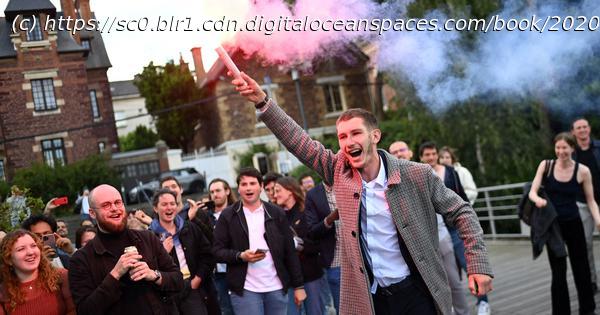Days after being tipped to win, Marine Le Pen’s far-right National Rally is now coming in third in the national election results.
The French election results are everything except what predictions had forecast.
Only days ago, Marine Le Pen’s National Rally party was tipped to win. But as results came in it became clear it was the loser of these National Assembly elections.
The far right National Rally is coming third, behind Macron’s centrist Ensemble coalition in second. And in first place, somewhat against the odds, is the three-week-old left-wing alliance the New Popular Front.
This is a major twist in the roller coaster that French politics has been since June 9 when Macron called a snap election. Macron, who will serve as president until 2027, now faces a turbulent period of government.
Results are still coming in, and will for another few hours. However, the New Popular Front is tipped to win 177 to 192 seats, Macron’s alliance 152 to 158 seats, and the National Rally 138 to 145 seats. Only a week ago polls were predicting 200 to 260 seats for the National Rally and a decimated Centrist coalition. The latter certainly did better than expected, so did the moderate right of the Les Républicains party, with 63 to 67 seats in the new house.
However, the results mean that no party will likely be able to form a parliamentary majority on its own, and France is heading for what will likely be a turbulent coalition government.
Overall, this election is a significant victory for the left. However, the New Popular Front is unlikely to be able to deliver on its key electoral promises, contrary to what divisive hard-left populist Jean-Luc Mélanchon claimed in a victory speech he gave on behalf of La France Insoumise, the lead party within the New Popular Front coalition.
The French parliamentary system under the Fifth Republic was designed for two large blocs: the moderate right and the moderate left, with a small centre in the middle and even smaller extremes on the far left and far right. This is how it’s been working since 1958, with only two exceptions in over six decades: President Valéry Giscard D’estaing (1974-1981) and President Macron (since 2017), two centrists presidents who took the nation by surprise.
Today, however, the situation is unheard of with three major coalitions very close to one another in the French lower house. None will be able to form a government on their own: they simply do not have the numbers.






